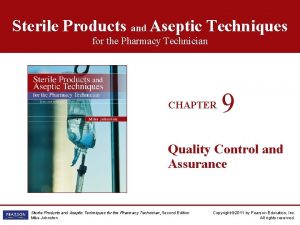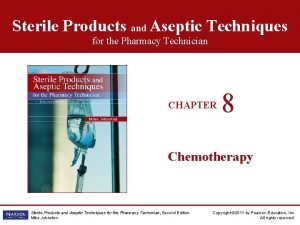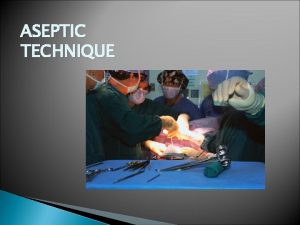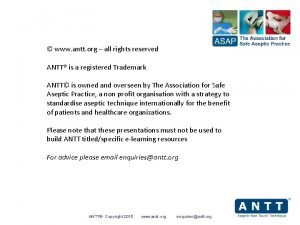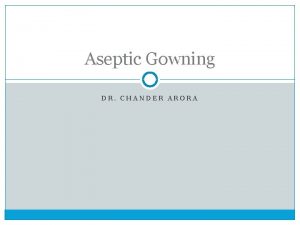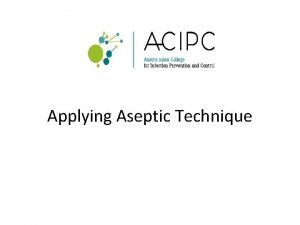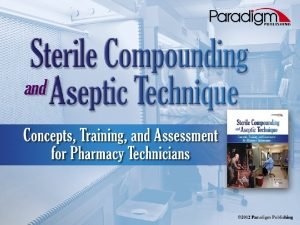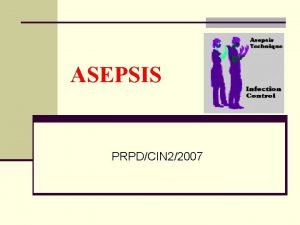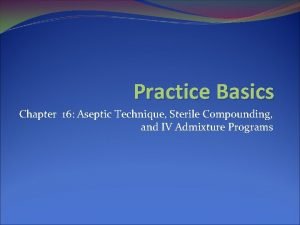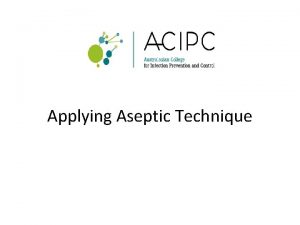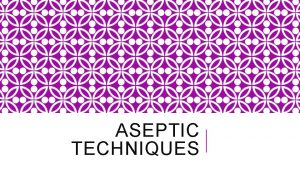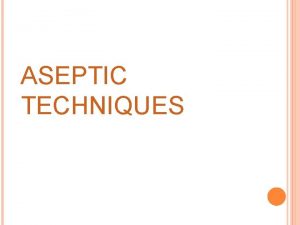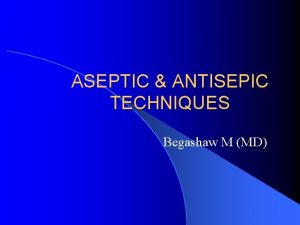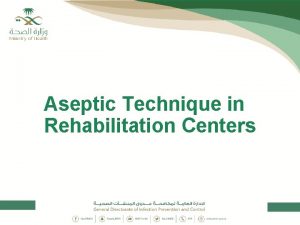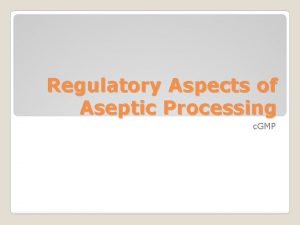ASEPTIC TECHNIQUES ASEPTIC TECHNIQUES v Aseptic techniques are











- Slides: 11

ASEPTIC TECHNIQUES

ASEPTIC TECHNIQUES v. Aseptic techniques are directed toward maintaining cleanliness & eliminating or preventing contamination

ASEPTIC TECHNIQUES v. Contaminated=organisms & pathogens are present v. Any object or area that may contain pathogens is considered contaminated

ASEPTIC TECHNIQUES v. Asepsis=absence of disease-producing microorganisms (pathogens). Also called clean technique or medical asepsis v. Sterile=free from all microorganisms, both pathogens & nonpathogens, including spores & viruses. Also called surgical asepsis

ASEPTIC TECHNIQUES v. A major way to break the chain of infection is to use aseptic techniques while providing health care. Common aseptic techniques: ØHandwashing ØGood personal hygiene ØUse gloves when contacting body secretions or contaminated objects ØProper cleaning of instruments, equipment, & environment

ASEPTIC TECHNIQUES Various levels of aseptic control are possible: ØAntisepsis=antiseptics prevent or inhibit growth of pathogens but aren’t effective against spores & viruses. They can usually be used on skin Example: alcohol, betadine

ASEPTIC TECHNIQUES Various levels of aseptic control are possible: ØDisinfection=a process that destroys or kills pathogens. It is not always effective against spores & viruses. Chemical disinfectants are used in this process. These can irritate or damage skin; are used on objects Example: bleach

ASEPTIC TECHNIQUES Various levels of aseptic control are possible: ØSterilization=process that destroys all microorganisms, both pathogens & nonpathogens, including spores & viruses. Example: Steam under pressure, gas, radiation, & chemicals can be used to sterilize objects. Autoclave is the most common piece of equipment used for sterilization

LET’S REVIEW Which of the following practices effectively destroys all microorganisms? a) Sterilization b) Medical asepsis c) Disinfection d) Use of antiseptics The correct answer is…. A

LET’S REVIEW Aseptic technique is directed toward maintaining: a) Surgical asepsis b) Sterility c) Contamination d) cleanliness The correct answer is…. D

LET’S REVIEW The process that destroys pathogenic organisms but is not always effective against spores and viruses and it used mainly on objects, not people is ____________. a) Sterilization b) Chemical disinfection c) Ultrasonic cleaning d) antisepsis The correct answer is…. B


